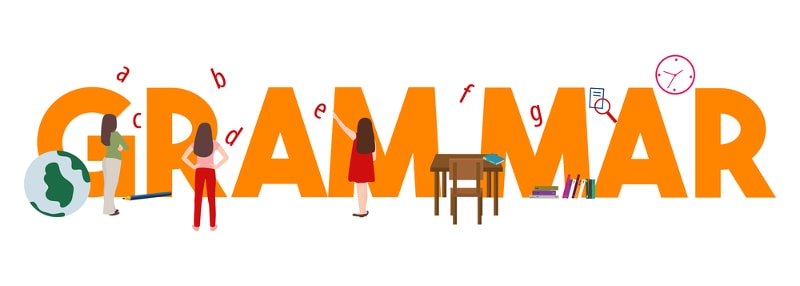Is grammar important? I have heard many school kids and ESL students ask that question. My answer is simple: “Yes!”
Why is grammar important
Grammar is the backbone of any language, and without it, your meaning is often lost. In English, grammar provides the structure to organise and put your message across. In the same way as a train needs tracks, you can’t convey your meaning without knowledge of the grammatical patterns and structures of the English language. Nevertheless, ESL students sometimes feel it’s archaic or irrelevant.
Grammar can seem abstract
I understand that many students ask this question simply because they want to know where they stand regarding their ESL learning.
Some language courses teach grammar almost exclusively as if preparing the students to be grammarians of the second language rather than real-life users. In the other extreme, there are “communicative” courses where the only activities are conversation or reading and commenting on an article. These are very different methods and outcomes to learning a new language.
Grammar versus conversation
I believe that a mix of grammar and conversation is best. Indeed, a good command of English grammar does not imply that the person can communicate effectively, which is the case for students exposed to grammar-only methods. Many would act like robots by reciting the grammar but cannot express basic information. Conversation is key!
Conversation is a method for more advanced students wishing to ‘brush up’ their second language skills. Still, it is undoubtedly too vague and inconsistent for those in need of building up the foundations of a new language.
So is grammar really important for a second language learner? Yes, but we must also focus on how to present it. I want to prepare people to engage in communicative situations using appropriate language and patterns. I am not interested in explaining the grammar uses that a specific pattern has.
Teaching grammar
Here are some ideas for ESL teachers and home school teachers to use in their next lesson.
Create curiosity: Before you start using new material, introduce students to the topic first. First, you can have them guess what the material will be, and if they cannot use appropriate language, you may provide it. In addition, use this time to introduce new vocabulary relevant to the topic. After you have created curiosity for the subject, follow the structure below:
- Provide them with exposure to authentic language and real situations in context.
- Next, focus on specific words. Use games like Hand Sign Stories to play with the words and their meaning. Hand Sign Stories is in my games books below and on this post, ESL Online Games. (It’s great in a face-to-face classroom too.)
- Once students understand the new words well, start making sentences. Use games to practise so students become more at ease with the new structure.
- Next, do exercises or fun activities to practice the new structure. For example, try this ESL writing game or this speaking activity for beginners.
- Finally, give students homework to help them practice outside of the classroom. Here are tips for how to motivate a child to do homework.
In these steps, we first create curiosity. Then, we build on the topic by introducing keywords. And finally, we build context around the words to create conversation. This is a reliable way to help your students grasp the (oft-challenging) aspects of English grammar.
Use these books to liven up the task of teaching grammar:
-
Sale Product on sale
 Plays and Skits for Teens
Plays and Skits for Teens€19.97Original price was: €19.97.€15.33Current price is: €15.33.Rated 5.00 out of 5 based on 1 customer rating -
Sale Product on sale
 Games and Activities for Teens and Adults
Games and Activities for Teens and Adults€19.97Original price was: €19.97.€15.33Current price is: €15.33.Rated 5.00 out of 5 based on 12 customer ratings -
 ESL Online Games€19.97Rated 5.00 out of 5 based on 4 customer ratings
ESL Online Games€19.97Rated 5.00 out of 5 based on 4 customer ratings




1 thought on “Is Grammar important for language learners?”
It is one of the most important languages in the whole world